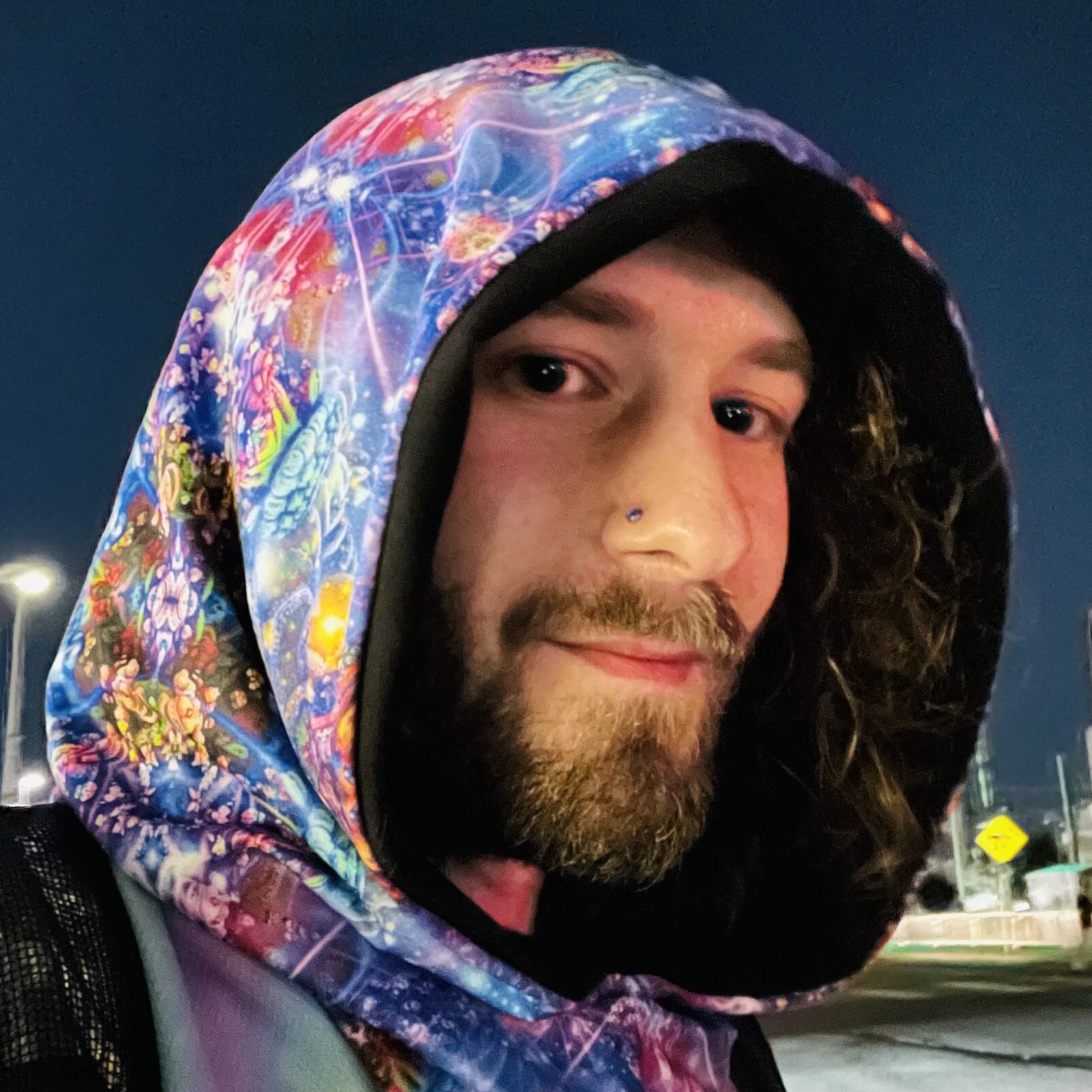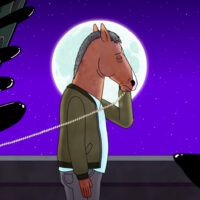Content warning: child abuse
Growing up, I don’t know if I realized my dad was weird. He was angry; he was mean; he was petty; and he was manipulative. He was unique, and yet I grew up to expect everyone in my life to be this way. I want to be someone who stands up for themselves and their boundaries. Historically, though, I found this difficult when I felt fearful that those I was confronting may a) attack me (either physically or verbally) or b) reject me. Often, the level of difficulty led me to not even attempt to be confrontational. This meant a lot of my feelings, boundaries, and needs were kept inside – hidden away from those I was afraid might reject me for expressing my truth.
Complex PTSD and Fear
I think it is important we do not get bogged down in diagnoses when working on our mental health journey. At the same time, I feel diagnoses are valuable tools, at least for me. A diagnosis can help me understand why I experience certain feelings the way I do and can help me feel hopeful about healing. I did not know I had complex post-traumatic stress disorder (C-PTSD) until I was about 25. Until then, I did not understand that I was experiencing triggers multiple times throughout every day, and I did not understand how frequently I was dissociating. I think many people are at least familiar with PTSD by name and general symptoms. What makes the diagnosis complex is if the exposure to traumatic events is prolonged or repeated. To illustrate this difference, consider someone who developed PTSD after a car accident. A car accident is a single event. In the future, this person may feel nervous when they get in a car. They may get flashbacks when they drive down the same road where the accident occurred. PTSD triggers can be more nuanced as well: Perhaps they were having a conversation about a topic just before the accident, and now they get flashbacks when said topic comes up in conversations while driving. They may even develop avoidant behavior: avoiding driving down the street where the accident occurred to avoid the flashbacks. However, this trauma and the post-traumatic stress are, in a way, isolated to the car crash. They may observe their life is now delineated into before the accident and after the accident, and the traumatic event is the boundary between these phases of life. The trauma is a point in the person’s life, but not a period of the person’s life.
When it comes to C-PTSD, the trauma generally occurred during/throughout a period of a person’s life. In my case, I was raised by a madman for 18 years. As a kid, this man towered over me, booming commands and screaming obscenities. Attempts to express my needs were met with gaslighting and bullying. Attempts to express my limitations were met with shrugs. Until I was about 13 or so, physical beatings were an expected occurrence. I can only remember one time I ever attempted to express to my dad that I was struggling with my mental health. When I was a teenager, I told him I thought I was dealing with a lot of stress because my punishments were often unpredictable, and communication was inconsistent. I had an agreement with my parents, in which I mowed the lawn in exchange for cable TV in my room. However, my dad at some point decided that mowing the lawn was how I was able to have any comforts in life. One day, I was struggling physically and asked if I could be excused from mowing the lawn that day. He told me if I didn’t, I would be grounded. He said that we all agreed that I would mow the lawn, but he ignored that it was in exchange for cable in my room. I reminded him of this agreement. I expressed that I used to receive more frequent physical punishments, and I was afraid these would return with the unpredictability of my consequences. With this in mind, I requested more clear communication regarding what my responsibilities were and what the consequences would be for not fulfilling my responsibilities. My dad laughed in my face.
The net result of this upbringing was that I was afraid of expressing myself and my needs to others, especially those close to me. What compounded this is that we seek the love that is familiar, not the love we deserve. In high school and college, I found myself chasing after men who reminded me of my dad (though I didn’t see the signs at the time). After grad school, I worked at businesses who took advantage of me. I worked for bosses who gaslit me and took advantage of my professionalism, compassion, and lack of self-assuredness. By surrounding myself with people like my dad, I reinforced my C-PTSD. In a way, I convinced myself that these kinds of people were normal, to be expected, and I needed to stay in line and learn to be subservient to them.
I am good at socializing and making friends. When we first meet, I am open and honest; I try not to wear any masks. However, I will be a little guarded, and if I learn we are not a good fit, I will usually stop trying to cultivate the friendship. I try to be careful because I want to make sure you’re not like my dad, and I need to check if I am forming a friendship with you for the wrong reasons. (Once, soon after meeting someone, they told me, “You’re not as funny as you think you are.” I chased after them for years, and they did not treat me with respect.) Once we’ve gotten to know each other, and I feel comfortable being honest with you, the anxiety starts. I worry that if I express a boundary or a new idea I’ve been meditating on, you will think of me as “too much work” or “too much baggage.” I worry that if I don’t explicitly choose my words with perfect accuracy, I could imply some unintended prejudice or insulting comment, which may alienate you. If I say something offensive, I want you to correct me. However, I am afraid you won’t speak up and will instead decide I’m not worth your time. In a way, I do not see that you have moved on from the “we just met, and I’m staying guarded for now” mindset. I’ve observed that once I am feeling anxious about our friendship, I can start to avoid reaching out to you for fear of these anxieties. For example, if I don’t text you, then you can’t leave me on read. If I’m not left on read, then I won’t feel anxiety that the last thing I said upset you. This behavior alienates those I want to be close to, though.
I have worked to surround myself with people who uplift me and support me. I have worked to remove toxic people from my life. Now that I am surrounded by people who support me, I can challenge my anxieties more often. Crucially, the responses to my expressions of vulnerability do not match what my anxieties predict. As an adult, much of my mental health journey has been learning to accept my fear and expressing myself anyway. Usually, the feelings and actions are as follows:
- I recognize I am not expressing a need or feeling, and I need to express it to a person.
- If necessary, I work on my mental health practices to process my triggers. Any parts (feelings) in my mind who need to speak get to speak, and I listen.
- I ask the person if we can talk, and I make my intention clear if appropriate. For example, “Is it ok if I give you feedback right now?” or “Is it ok if I express some of my needs to you right now?”
- I say the need or feeling with a focus on nonviolent communication.
- The person accepts me, responds, and we come to a better understanding.
- 1-2 hours after talking (or the next day), I feel intense anxiety and fear that the person is going to reject me. I will feel a compulsive need to ask them if they are mad at me. I may feel I want to reach out and tell them I take back everything I said; it’s all good; no need to concern themselves with my feelings. In summary, I feel a need to unburden others from me. (I do not act on these compulsive feelings. I have learned that acting on them increases them.) I may feel down on myself, and I may be low-energy.
- This feeling can last up to a few days. It can last longer if I am practicing being vulnerable with multiple people in different contexts, since I am repeating 1-5.
What I observe is that being vulnerable and honest with others is a trigger for me. There is a temptation to not be vulnerable, so I will not feel this fear of rejection, feel low-energy, etc. I work to avoid falling into this temptation. Usually, I sit with the feelings, talk to my parts, and remind myself this will pass. I remind myself that I’ve felt this cycle time and time again, and acting on the anxiety has never brought any good. While this approach has better results than acting on my compulsive anxieties, I’ve still never felt completely satisfied with it. I don’t like it because it feels more like ignoring thoughts than hearing them. And I want to hear them. I want to give them space.
The Ski Injury
I did not seek out athletic activities growing up. In fact, I generally avoided athletics. There were exceptions, and I enjoyed skiing when my family moved to Utah, but I do not feel I am being dishonest when I say I was not an athletic kid. As such, I never dealt with a sports injury. I never had a sprained ankle, though some of my friends did. I never broke anything. My arm was in a cast for a week after surgery on a finger, but it wasn’t due to an injury. My ski injury was a very new experience for me.
In January 2022, I went to Copper Mountain for my first ski of the season. It was the first time I would be skiing since I started addressing my ADHD as an adult as well. I was excited to see what skiing would be like when I was more focused.
It was remarkable. I describe it as my best ski day ever (except for the injury). My skills were on point. I was impressed by myself and my abilities when my mind was completely with me on the mountain. Around 3pm, I was getting ready to pack up. I decided I’d do a run through the Enchanted Forest before leaving. This day had been incredible, and I wanted a little challenge; the Enchanted Forest was all trees.
I skied into the Enchanted Forest cautiously. With bad visibility and uneven snow, it helps to plan your next few steps in advance. Through most of the forest, I was doing pretty well, and I was just about out of the trees when I unintentionally caught air. I turned to get around a tree, and I didn’t notice how steep the snow around the tree was. I went straight downhill – fast. Though I tried to regain control, the downward slope was only a few yards, and it ended with an upward slope and a drop-off. I took this nature-made jump, went into the air, and my left ski landed flat against a snow bank. I fell over, disoriented, and my right ski popped off. The amount of force against my left ski was felt throughout my leg, and my knee took the worst of it. In immense pain, my left leg was being forced into an angle by the still-attached ski. I worked to get my ski off without standing up. Once the ski was off, I quickly composed my thoughts. “Did I hear a pop? No.” (A loud pop is the signature sign of a torn ACL.) “Can I move everything?” I moved my arms and hands: all good. I moved my right leg: It hurt a little, but everything seemed alright. Then I tried to move my left leg, and it wasn’t so easy. I thought to myself, “If I don’t have full range of motion, I need to call ski patrol.” I tried my best, and I was able to extend my leg completely and then bend it completely twice. Confident I hadn’t broken or torn anything, I crawled over to my equipment, got it all on, gently skied down, got to my car, and drove the hour and a half home. When I got home, I could no longer move my leg, and it was immensely swollen. I had my first athletic injury.
I did not walk without aid for about a week. Furthermore, I didn’t take my dog out or take him for walks for about a month. (Don’t worry, my partners took care of him.) I cleared any plans that involved walking around. For about two months, I didn’t make dinner plans with anyone because sitting with my leg at a right angle for long periods of time was uncomfortable. Around April, I thought my knee was back to normal. I thought I was walking fine. Then I tried to go back to normal life. I went to a concert and went out with my friends. After a week or so, my left knee wanted my attention. It felt swollen and it ached. It felt like there was something on top of my knee all the time. My mind almost immediately thought, “If I want to have the time of my life for six days at Szigetfest in Budapest, I am going to need to take care of my knee.” I started going to physical therapy.
I found the week after my first physical therapy session to be empowering. My physical therapist gave me stretches to do at home. They weren’t comfortable, and they were somewhat hard. But after the third or fourth day, they weren’t as painful. I remember telling her during our second session how excited I was. Just that I could feel even a little improvement was enough to build hope and confidence. Working on my rehabilitation and seeing the results week over week has felt incredible.
Rehabilitation isn’t linear, though, especially with how I live my life. On the third night of Szigetfest, I recall I could feel my left knee. (I arrived in Budapest three days before the festival and walked 15 miles/24 km a day for those three days. That is not my normal activity level at all.) It wasn’t painful, but I could feel it. I went to a smoothie booth and asked if I could buy a drink and also get a cup of ice. I put this ice in a plastic bag and iced my knee as I fell asleep that night. The next morning, my knee felt fine again. In that moment, I was not judging my knee for its previous physical trauma. I was not judging myself for my accident. I was listening. My knee was saying, “I need ice,” and I gave it what it needed.
Recently, my right knee started feeling funny. I thought this was odd. I couldn’t remember injuring my right knee, yet it was definitely trying to tell me something. One day, while driving and pressing my foot against the pedal, I realized my right knee required some help too. I took two ibuprofens and started doing my physical therapy stretches, but this time on the right knee. At first, I was surprised how hard the stretches were. I thought to myself, “Wow, my right knee has really gotten out of practice not being included in these stretches!” Perhaps I had been pushing myself harder and harder without realizing it as I strengthened my left knee, and maybe my right knee couldn’t keep up? I don’t know if there’s any truth to that, but it was a hypothesis. Whatever the cause, I integrated the right knee into my daily physical therapy stretches. I also iced the knee twice daily for the next few days. Less than a week later, I was elated when my right knee felt back to normal. I decided to keep the right knee stretches in my daily routine.
Thought Processes are Like Muscles
In mid-August, just after Szigetfest, I felt like my mental health journey was going full speed. I was forgiving myself, I was expressing myself more to others, and I was starting to be able to discuss my trauma without feeling triggered by it. I felt like I was putting myself out there, living with my fear, while not letting it drive me. Then I started interacting with someone who was very similar to my dad. It had been a while since I had interacted with someone this similar to him. Usually when I feel triggered, I can identify that the person I felt triggered by was just doing something that reminded me of my dad. Just because someone says something a little mean when they are hungry does not mean they are like my dad, even though I may be triggered after they say it to me. This was different. This person was cruel, and they were prone to gaslighting others. After a few weeks of interacting with them, I worked to distance myself from them and remove them from my life.
When I interacted with this person, I felt old feelings and urges. I felt a lot of self-hate. After I removed them from my life, I thought to myself, “Have I grown if all of these thoughts and feelings can come back? Am I really in a different mental place than before if I can still feel self-hatred sometimes?”
Logically, I knew I was demanding too much from myself. I noticed that, like writing a character for a TV show, I was looking for my character development to crystallize and for my arc to move on. In expecting this, I was expecting perfection. This is an expectation that humans cannot meet. But logic does not help anxiety. Logic does not stop it; logic only pushes it to the side. Like a small child, pushing anxiety to the side makes it more upset. It wants to be heard, and we’re ignoring it. Logic is helpful when I need to decide if I am going to act on a feeling that I am fused with. However, I cannot talk to the part/feeling with logic in an attempt to alleviate it, because the part will then feel invalidated.
I sat with these feelings. I talked to them, and I listened to them. Often I just existed with them, as that’s what the feelings asked for. I was low-energy for weeks, and I sometimes felt disconnected from others as I was focused on being with these feelings. I also tried something new: I told people about my anxieties, though I wouldn’t necessarily go into detail. When someone asked, “How are you today?” I would reply, “I’m dealing with anxiety today.” My thought was, “People were very accommodating with my knee. Maybe they won’t judge me for my anxiety.” I am pleased to report this thought was accurate. I received compassion. Friends and coworkers asked if there was anything they could do for me. I realized, at least at this time, acceptance was all I needed.
I started to view PTSD like my ski injury: Day-to-day, my knee feels fine. However, if I hit it funny, I may need to step back to take care of it. I may put ice on it for a few days and maybe take life a little easier. All my rehabilitation work isn’t suddenly undone, but the knee still requires attention because of the previous injury. That’s not the case for everyone, though. Some people may hit their knees in the same way and not have a problem. Those people probably didn’t have a knee injury like mine, though.
Thinking of PTSD like a ski injury, it’s like I was emotionally injured as a child. When I interact with narcissists and others like my dad, it’s like I’m hitting that emotional injury spot. Other people may be able to interact with narcissists without a similar mental health strain, but they didn’t have childhoods like mine. If I interact with a narcissist for two weeks, I can compare it to someone banging on my left knee for two weeks. It would hurt, and that’s to be expected. At Szigetfest, I iced my knee when I noticed it was sore. With mental health, I give my feelings attention and compassion. To give them the attention they need, I may need to clear my schedule. I might cancel a blog writing session, cancel plans with friends, or try to take it a little easy at work. And that’s ok – just like when I canceled my ski plans for the rest of the season.
And what about the anxiety when I’m vulnerable with others? I open up, and the next day I feel scared of abandonment. Perhaps this is similar to my right knee (the one with no injury). Now that I have made all this progress with my mental health, I’m acting differently. I’m being more open and honest about my needs, and I’m putting myself out there more. Long ago, though, I would never be this vulnerable. I can view being open and vulnerable with others like a muscle. I can view the fear of abandonment as muscle soreness. When I’m working on being vulnerable with different people at the same time, that is a lot of vulnerability I wasn’t used to as a kid. It’s like after the first ski of the season and feeling sore the next day because those muscles were out of work for the last 8 months.
I’m trying out a new approach to my post-vulnerability anxiety. When I notice that I’m feeling anxious after being vulnerable and honest, I mentally pat myself on the back and say, “Wow, you’ve been working really hard.” Saying this to myself, I feel seen, I feel relief, and I feel proud.











